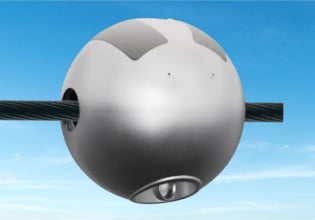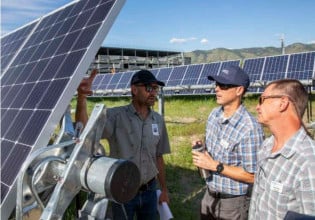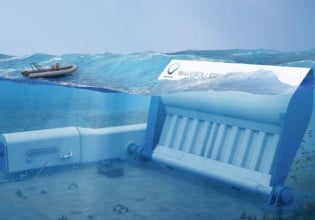At the recently-held IEEE International Electron Devices Meeting in San Francisco, Hiromichi Ohashi from the New-Generation Power Electronics & System Research Consortium (NPERC-J) in Japan observed: "Inconvenient truth is confronting us when we investigate the possibility of the future power electronics and power devices: The efficiency of power converters is approaching one hundred percent."
Dr. Ohashi’s paper titled “Horizon beyond Ideal Power Devices†challenges the power electronics industry to: Change how progress is measured in power electronics. Instead of simple measures of electrical efficiency, he proposes consideration of the prevalence of the efficient use of electrical energy. Starting from this viewpoint, he suggests a new concept, “nega-Watt cost.†In terms of the nega-watt cost, role of advanced power devices are discussed looking at the “horizon beyond ideal power devices in terms of efficiency.â€
For example, instead of using efficiency, it was proposed in 2004 that output power density be used as the new metric to measure progress in power electronics. According to the reports at that time, output power density had almost tripled in the previous 40 years, enabling the volume of power converters to be reduced by a factor of 1,000. In the last decade, continuing efforts have been made to realize further increase in the output power density. Unfortunately, the relation is becoming stagnant around 10W/cm3 with the peak efficiency of more than 99%. The stagnation mainly comes from difficulties in reducing the volume of the heat sink and passive components.
“It can be said that the current age of highly-efficient power converter development is gradually completing with progress in low-loss power devices. Going back to the original purpose of power electronics, it is necessary to make sure wide spread of new concept for efficient electrical energy use as a whole in a society,†observed Dr. Ohashi.
“The ubiquitous use of power electronics will become increasingly important for efficient energy use. The spread of affordable power electronics systems is the key factor for the future energy efficient society. Energy saving by highly-efficient power electronics systems is equivalent to an electrical energy dynamo that is a "nega watt." Therefore, the new target "negawatt cost" (NWC) is proposed as follows:
Negawatt cost = (system cost + operating cost) / (saved energy x operation time)
“Reduction in the NWC will be the essential target in order to provide people and industry with an affordable efficient system not only in advanced counties but in developing countries. In the equation, the system cost is basically determined by productivity as well as the amount of energy saving. Reliability is another key factor for reduction in operating cost and long operation time,†Dr. Ohashi observed.
He continued: “Two big challenges for efficient use of electrical energy will be important in the future. Firstly, realization of ubiquitous power electronics world by power electronics system of lower nega-watt cost, will be a big and aggressive challenge. According to trial calculations, negawatt costs of highly-efficient 100kW motor drive and inverter air conditioners are from 11yen/kW hr. to 15yen/kW hr. These costs are the same as cost of ordinal power generation cost by power generators or wind turbines. Enabling technology for low power loss devices and components, high out-put power density converter and long life time reliability will be core elements to realize lower nega-watt cost systems and components.

“The second challenge is to realize the energy internet as a service domain by making together distributed energy network and digital network through both the semiconductor domain and the functional domain. The energy internet domain is made up mainly of the semiconductor domain. The semiconductor domain and service domain will be connected by functional domain which consists of integrated power converters, solid state transformers, Energy routers, intelligent breakers, Data centers, base station, Wi-Fi, and so on. In the semiconductor domain, highly seamless system integration of sensor, processor, memory, communication and power device in the level of on-chip and in-package will develop in the future.
“At same time, software, protocol and novel power network theory will be essential for system integration realization as cluster of semiconductor group, as well as basic research of advance material and fabrication technology. Collaboration in making technology roadmap toward the future horizon will be needed,†Dr. Ohashi concluded.






